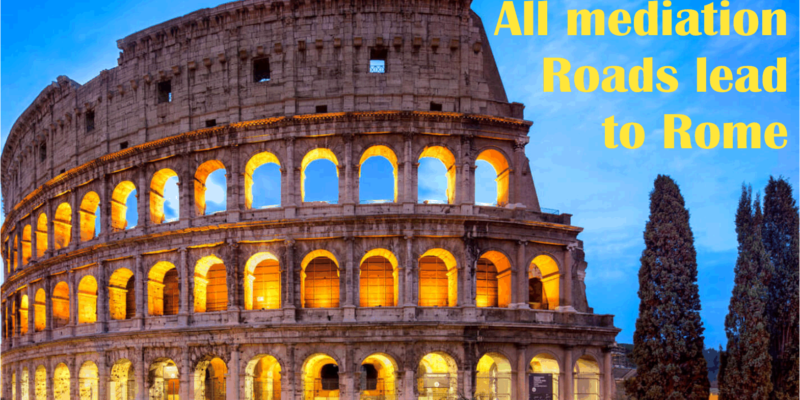There aren’t many models of effective mediation legal frameworks that ensure sustainable systems of mediation. In fact, in most countries, the mediators don’t have demand and a real market for services. They are trying to convince users, lawyers, judges, policy makers, others and sometimes themselves that mediation is a viable option of the dispute resolution culture. There are a few recent examples where mediators are busy these days – Italy, Greece and Turkey – they all have domestic mediation frameworks based on the Italian Model and policy, “Recourse by Voluntary Agreement during a Required Initial Mediation Session”. It is enough to say that all mediation roads lead to Rome.
In the April 2018 issue of Alternatives, Leonardo D’Urso published a very interesting article, “Italy’s ‘Required Initial Mediation Session’: Bridging The Gap between Mandatory and Voluntary Mediation”. This piece advocates for using effective legislative mediation to generate demand and delivery of mediation services.
In essence, according to Leonardo and the statistics in the last four years, it is a proven fact and not a matter of opinion that a required first meeting of the mediator under some circumstances can generate a mediation demand and practice. There are five conditions that, if met, will enable environments that are friendly to mediation.
The conditions are the following, as quoted from the article:
1) The relevant parties of the dispute should be present in person; if the lawyer is without the client there is little chance to proceed to the full mediation process;
2) The session should be administered by an experienced and well-trained mediator;
3) The session should be held in a short period of time since the filing of the request and the fee should be minimal in order to not be considered a barrier to the access to justice;
4) The parties when present can decide to easily “opt-out” without sanctions, or voluntarily continue the process; and
5) Substantial sanctions should be given in the case of an absent party during the subsequent judicial proceeding.
Leonardo argues that if all the relevant parties and the mediator are exploring together – in joint or separate meetings, but present at the same time – the possibility of using mediation, many agreements to initiate the process can be made by the parties. Not only Italy, but also Turkey reported over 30.000 cases in a few months in 2018, announcing that the mediation profession is alive in Turkey (details here).
Indeed, all mediation roads lead to Rome. But what do we learn from all these examples? Who’s next? Who’s listening?
To make sure you don’t miss out on regular updates from the Kluwer Mediation Blog, please subscribe here.
________________________
To make sure you do not miss out on regular updates from the Kluwer Mediation Blog, please subscribe here.



